A key step in the grantmaking process is assembling and effectively managing a grant review committee.
A grant review committee is a group of people assembled to review grant proposals and make decisions on awards for a grant program. Grant review committees can vary in size, expertise, and time demands depending on the grantmaker and the grant program.
As a grantmaker, you’ll depend on your grant review committee to objectively evaluate all grant applications, and collaboratively make smart recommendations regarding funding to maximize impact.
Here are five best practices for running your grant review committee.
Running a grant review committee: 5 best practices
1. Clarify your process
Before you recruit members to your review committee, begin by clarifying your full process.
This should include defining your objectives, outlining your review process, and determining your timeline. This will help you clearly communicate expectations with prospective grant review committee members, and set the stage for a smooth process.
Define your objectives
Virtually all grant review processes will share the goal of awarding the most deserving grantees. But more granular objectives will vary based on the organization and program.
For example, one review committee may seek to award local researchers focused on areas of concern in a particular community, whereas another may aim to award highly innovative or historically-underrepresented researchers in a certain discipline.
Defining the objectives of your grant will help provide clarity around who you’ll need to recruit to your review team. Factors to consider can include background and areas of expertise.
For example, for review of clinical research proposals, you may need a team with highly-specialized skills and experience.
Outline your review workflow
Once you’ve defined your objectives, it’s time to outline the review process itself. Using grant management software for grantmakers like Submittable opens the door to creating a multi-stage review process that will exactly reflect the needs of your program.
Typical workflows may involve the following steps:
- Screening applicants for your eligibility criteria to save your review team time.
- A first pass review with a simple thumbs up or thumbs down rating.
- A second round of review with a detailed review rubric.
- A final round of approval with qualitative feedback.
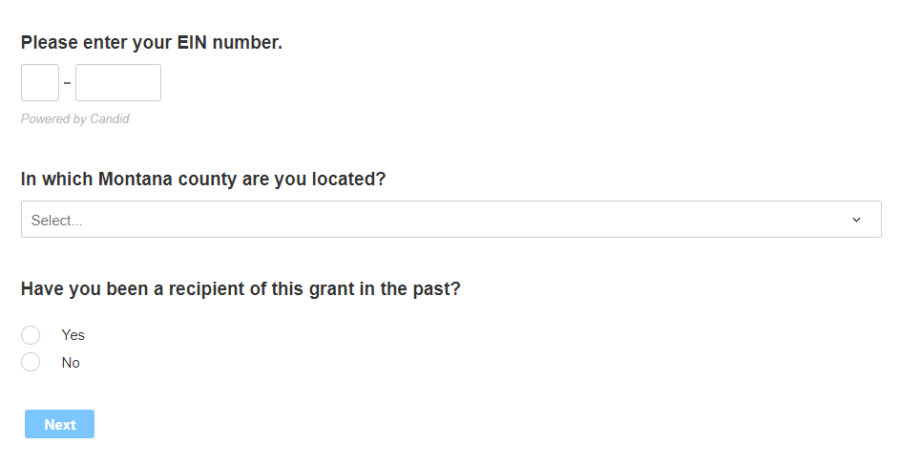
As you create your review workflow, it’s important to consider which members of your review team will participate in each round. This will control for the time commitment required of each review member, and ensure each application receives a well-rounded assessment.
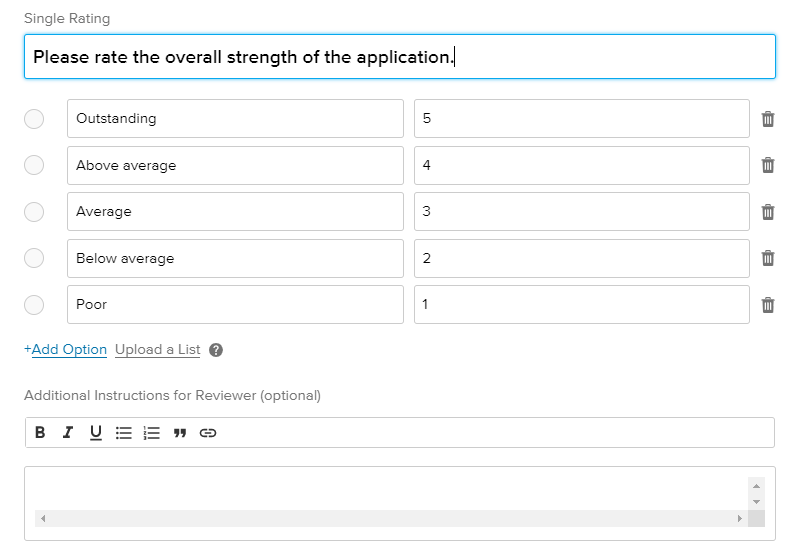
Determine your timeline
To determine your timeline, it helps to begin with the end in mind. Ask yourself: When do you want to award the grantees?
Then you can work backward, with answers to these questions:
- How long do you need to allot for each round of review?
- How long will you accept applications to your grant program?
- How much time will it take to recruit your grant review team?
The answers to those questions indicate when you need to begin your recruitment process, and clarify the time commitment you’ll expect from each committee member.
Level up your grant management process
Contact our team to see what you could accomplish with Submittable.
2. Assemble a diverse team
Once you’ve clarified your goals, you’re ready to assemble your grant review committee.
Assembling a diverse team will help you run an equitable selection process. Mounting evidence also concludes that an inclusive team will lead to better outcomes, including increased increased innovation, retention, ethical standards, and competitiveness.
Remember, true diversity doesn’t just address ethnicity, gender, age, ability, and sexual orientation. It can also include factors such as background, education, socioeconomic status, professional and personal experience, and geography.
Communicate expectations upfront
Early on, clearly communicate the work and time demands required by your committee members and any compensation you are offering.
Be mindful about asking for free labor from historically underfunded groups—even modest compensation, or alternative compensation, such as a discount or service, shows that you value the work that you’re requesting.
Use a remote platform
Using Submittable for your grant management process allows you to conduct your entire review process remotely. Reviewers can complete their work on their schedules. That’s important, because some reviewers with valuable input may not have the time available to travel and sit in long meetings.
A remote platform also makes it easier to include people across geographic locations, which can help you to recruit diverse members if you’re located in a more homogenous community.
3. Align for success
Before diving into your review process, set yourself up for success by training your team.
This will give you the opportunity to align everyone on your process in the context of the specific review tool you’ll be using. You should also consider training your new committee members on the risks of implicit bias.
Depending on certain factors, including the size of your team and your specific process, it may make sense to break up the training into smaller subsets, such as by review stage.
Introduce the review tool
The primary goal in your review team training is to ensure that everyone understands exactly what their role in the process will be. If you’re using a rubric, you’ll want to go over it in detail to make sure everything is clear.
It’s also crucial to demonstrate the software that you’ll be using to conduct your process. By walking your review team through a sample application, they’ll get a hands-on example of what’s expected of them.
Finally, explain what’s expected and required beyond the review itself.
For example, should reviewers label applications as they go, or move completed applications on to the next stage? These are key points that you should address before your review process begins.
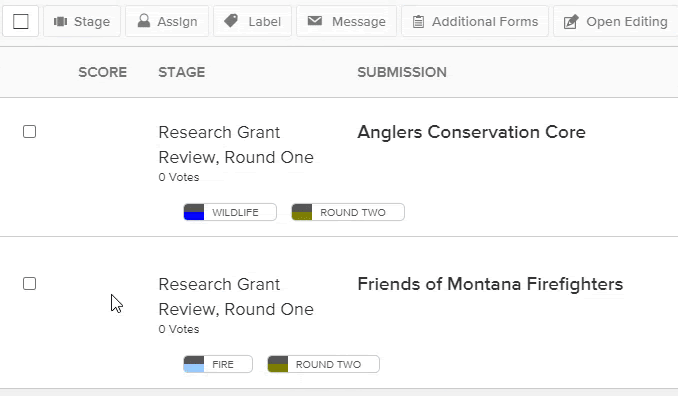
Train on inclusivity and bias
In spite of our best intentions, humans are biased in countless ways. And making decisions influenced by our biases will never lead to optimal results.
The good news is, a growing body of data indicates that one of the best ways to prevent bias is awareness. Right before your review process begins is an ideal time to provide a training on unconscious bias. Even better, planning for regular, in-depth training on bias prevention will pay dividends.
4. Review objectively
When it comes to your actual review process, you want to avail yourself of tools that will lead to optimal outcomes. Submittable offers specific features that can help ensure your reviewers are as objective as possible.
Favor confidential review
The first key to collecting objective reviews is making each reviewer’s feedback confidential. Confidential reviews help your reviewers avoid bias and groupthink.
Submittable offers five user permission levels which allow you control who has access to which data. Lower level reviewers will not be able to see other reviews, which means you can keep reviews confidential.
Meanwhile, administrators at higher permission levels can maintain access to all reviews, to check for troubling patterns or outliers among the review team, which could signal bias.
Hide sensitive applicant data
Similarly, it’s important to hide personally-identifying or other sensitive applicant data that could consciously or unconsciously influence your review team.
Submittable gives you the option to conceal from reviewers the responses to certain grant application questions. This allows you to collect important information that may be required for your reporting–like demographic data–without fear that it could influence reviewers.
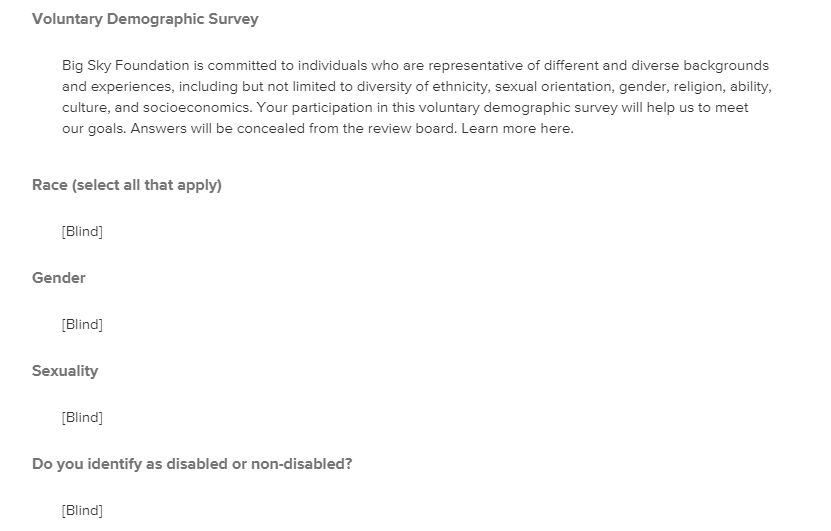
5. Build consensus
The ultimate goal of any grant review committee is to come to sound decisions and award deserving grantees—whether providing relief funding in a time of need or dollars to support important clinical research.
Fostering collaboration, planning for disagreement, and relying on numerical scoring are strategies that can help your review committee come to final funding decisions.
Collaborate efficiently
Like all teams, remote teams will perform better when empowered with tools to collaborate effectively. Submittable offers features specifically designed to allow reviewers to work well together without wasting time.
Reviewers can leave notes on individual submissions, and have the option to share a note with the entire assigned team, or only with administrators.
They can also use in-app messaging tools to correspond with applicants or other reviewers.
For increased efficiency, you can create message templates that reviewers can use for recurring tasks, like requesting additional information. All correspondence is easily accessible right alongside applications.
Plan for disagreement
Disagreement on your review committee is a positive indicator of an engaged and inclusive review panel. Still, you’ll need to navigate it in order to come to a smart decision. Here are a few strategies:
- Lean on your rubric, and guide conversations back to your established criteria wherever possible.
- Designate a facilitator to conscientiously mediate conversations. The facilitator should be on equal footing as the rest of the committee, not a leader, and rotating facilitators is even better.
- Encourage active listening and open-ended questions. This can lead to increased understanding.
- Foster a culture where dissension and disagreement are welcome. This will make all members of the committee feel safe in being “wrong”, changing their minds and learning from each other.
Rely on numerical scoring
When all is said and done, a numerical strategy can not only break through an impasse in your committee, it can also help the best applications filter to the top.
Your committee might choose to use average scores, or use a ranking system.
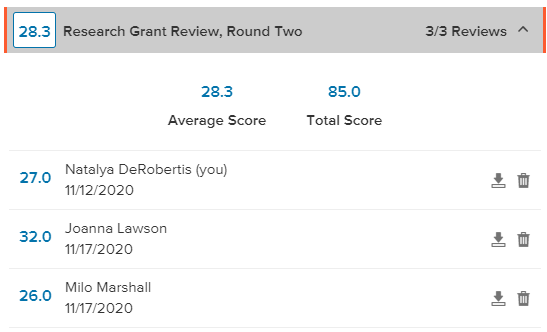
Whichever approach you use, each application should be reviewed by multiple members of the committee to ensure greater impartiality.
Running your grant review committee effectively is a crucial step toward making smart award decisions, which in turn ensures your funding dollars further your mission.
These grant management practices, along with the right grant management software, will help set grantmakers of all varieties up for success. To learn more about how Submittable can help your review team reach new heights, check out our demo video.
